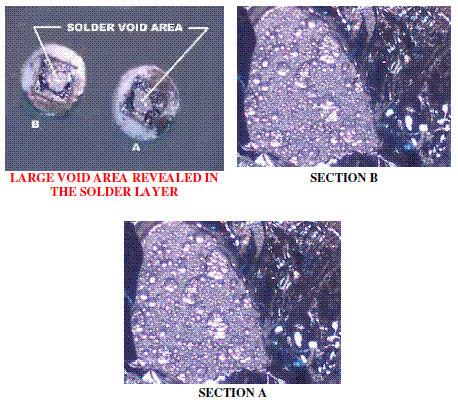مهمترین عامل سوختن دیودهای قدرت در مدارات در گیر با سوئیچینگ و خاصیت اندوکتیو بروز ولتاژهای گذرای بیش از حد تحمل دیود بویژه در جهت معکوس می باشد. این ولتاژهای تیز را اسپایک می گویند. استفاده از المانهای با مقاومت متغیر نظیر واریستور تدبیری برای کنترل این ولتاژهای معکوس می باشد. یک دلیل دیگر سوختن تجهیزات نیمه هادی در مدارات الکترونیکی ضعف اتصالات و لحیم کاری در مرحله نصب می باشد که می تواند به مرور موجبات گرمایش اضافی وسیله و سوختن آنرا سبب شود. Voltage transients, also referred to as voltage spikes, are the most common cause of diode failures. Most transients originate from the AC line but can also enter the charger from the DC side. Lightning and large inductive loads, such as motors turning on, can cause AC transients. Using equipment while the charger is in operation can produce transients on the DC side, which is a fairly common practice with scissor lifts. The most likely cause of most diode failures is Poor Die Attach Soldering! Thus, Solder Voids Are Created Which Prevent Heat Dissipation, Causes Hot Spots, Die Solder Reflow, and Ultimate Diode FAILURE. This invisible problem of poor Die Attach Soldering is much, much, more serious, and a lot more common than you might think. In the photographs below, diodes produced by a prestigious multinational semiconductor manufacturer were examined for die solder quality. These diodes were provided by one of our potential customers who have experienced serious quality problems and premature failures. This set of photos illustrates a very common situation when a diode is pried open. The crater-like areas in the center and right-hand photos are solder voids. The black areas are the silicon die. 

